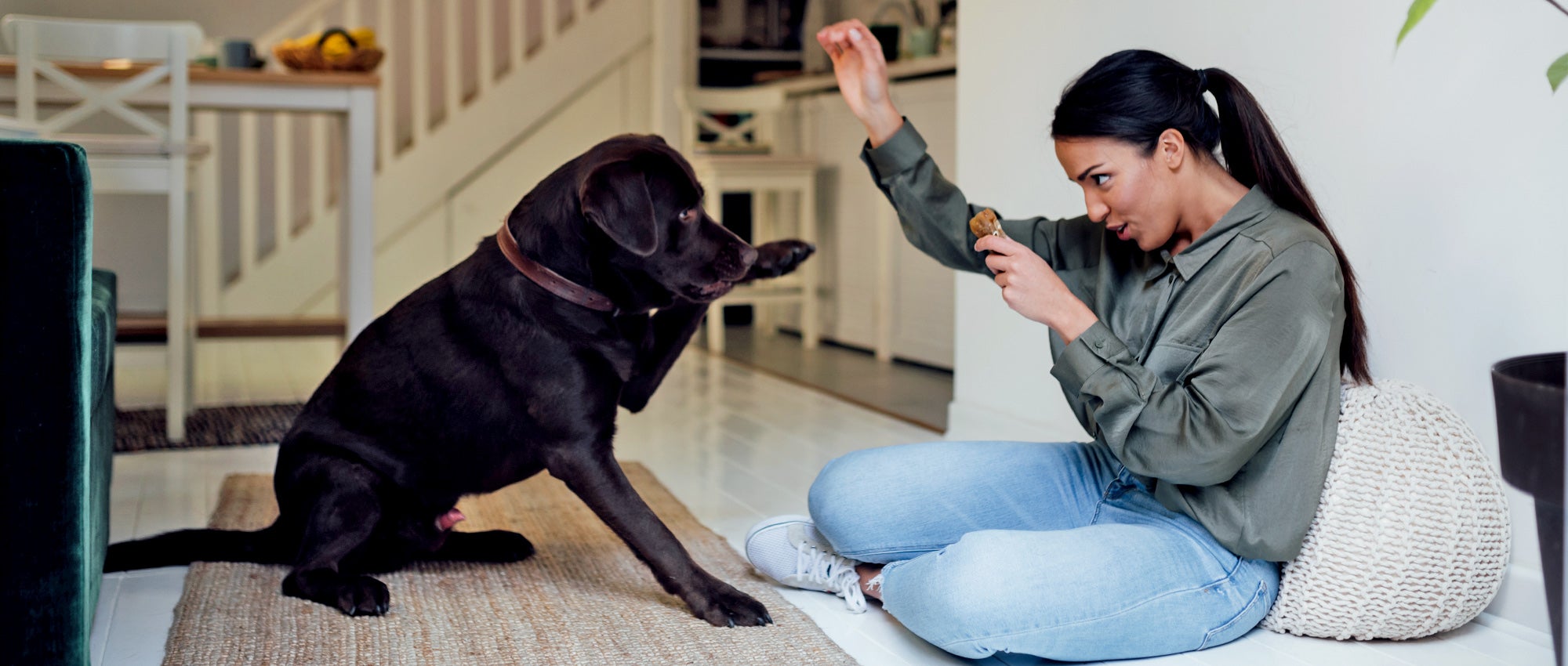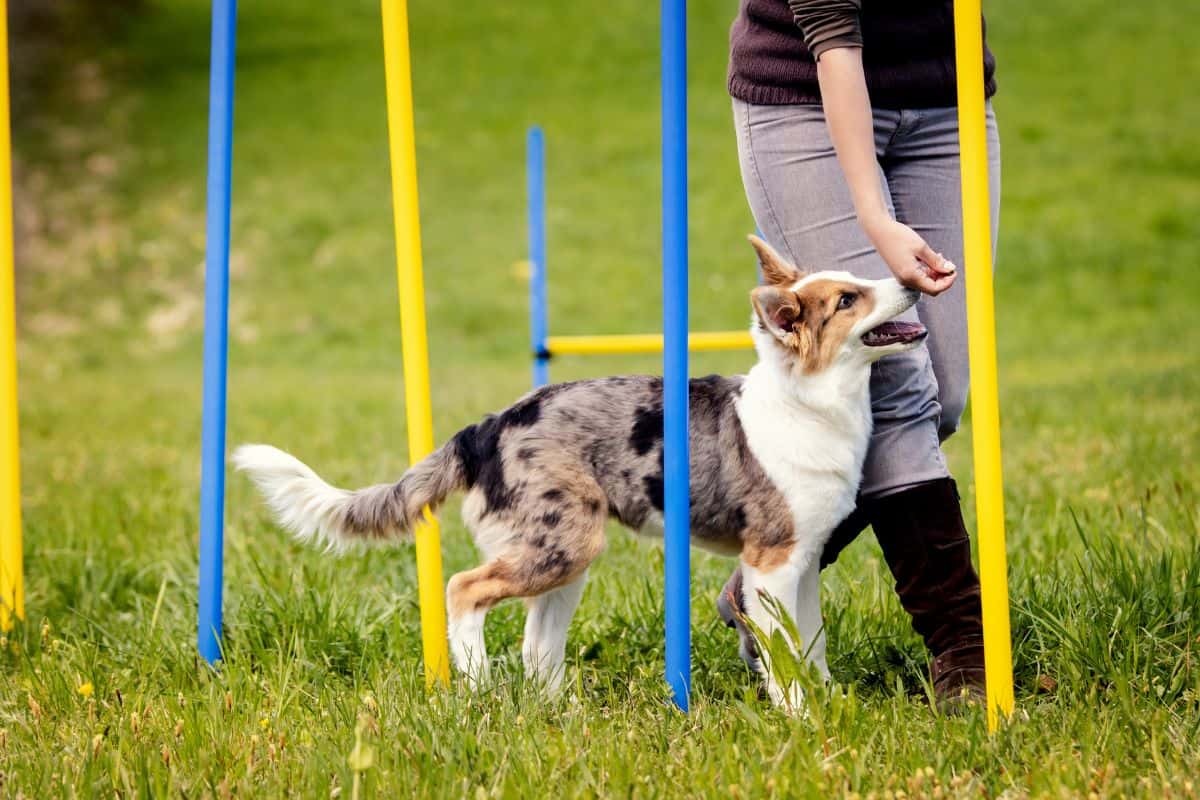Dog Training for First-Time Pet Owners: What You Need to Know
Dog Training for First-Time Pet Owners: What You Need to Know
Blog Article
Beginner's Guide to Effective Pet Training in your home
Effectively educating a canine at home requires a nuanced understanding of canine actions and effective interaction methods. Developing clear training goals, utilizing top quality rewards, and preserving consistency across family participants are vital components. Integrating training into daily regimens can enhance both engagement and retention.
Recognizing Pet Dog Habits
Comprehending pet behavior is necessary for reliable training and promoting a harmonious partnership between human beings and their canine buddies. Pet dogs communicate largely via body movement, vocalizations, and face expressions, making it crucial for proprietors to analyze these signals precisely. Acknowledging actions such as tail wagging, growling, or cring can supply insights into a canine's psychological state and purposes.

Common behavior issues, such as hostility, anxiety, or excessive barking, typically come from misunderstandings or unmet needs. Observing and dealing with these concerns without delay can stop acceleration and ensure a positive training experience. By cultivating a deep understanding of pet dog behavior, owners can tailor their training techniques to match their canine friends, inevitably resulting in a well-behaved and happy animal.
Necessary Training Tools
A fully equipped training room can substantially enhance the performance of dog training in the house. Crucial training devices make certain that both the pet and the fitness instructor can engage in efficient sessions that cultivate understanding and bonding.

Buying a tough leash and a comfy, well-fitting collar or harness is important for safety and security and control. These devices help develop boundaries and ensure the pet dog remains secure during training. Additionally, a marked training area, complimentary from diversions, aids concentration for both the fitness instructor and the canine.
Educating help such as training pads, cones, or agility tools can likewise enhance the experience by introducing range and obstacles. Having a notebook or digital app for tracking progress can be indispensable, enabling you to note successes and locations for renovation. Using these vital tools will certainly create a positive training atmosphere and lay the foundation for efficient learning.
Developing a Training Regimen
Establishing a constant training routine is necessary for effective dog training in your home. A well-structured routine not just assists in strengthening preferred habits however also offers your pet with a complacency and predictability. To produce an efficient training regular, begin by determining specific training goals, such as fundamental commands, chain walking, or housebreaking.
Select a designated time daily for training sessions, preferably when your dog is alert and receptive. Sessions needs to be brief, around 5 to 15 minutes, to preserve focus and stop fatigue. Uniformity in timing and environment will boost your canine's knowing experience.
Incorporate training right into daily activities to strengthen abilities. Practice commands throughout walks or nourishment, which integrates finding out right into natural regimens. In addition, continue to be flexible and readjust the regular as essential, visit their website suiting your pet dog's power levels and mood.
Positive Reinforcement Techniques
Favorable reinforcement techniques are basic to effective dog training, advertising preferred habits with incentives instead than punishment. This method utilizes positive stimuli, such as deals with, appreciation, or play, to urge canines to repeat certain activities. The keystone of this strategy is timing; incentives should be offered immediately adhering to the wanted habits to develop a clear association.
When executing favorable reinforcement, it is important to pick incentives that are encouraging for your pet. High-value deals with, such as tiny pieces article of chicken or cheese, can be specifically efficient throughout training sessions. Furthermore, varying the incentives can maintain your dog's passion and interest.
Begin with simple commands, like "rest" or "remain," and slowly progression to extra complicated jobs. Consistency is crucial; make sure that all member of the family make use of the same commands and benefit systems to avoid confusion.
In addition, it is important to remain individual and prevent irritation. Pet dogs, like people, find out at their very own pace. By cultivating a helpful training atmosphere via positive support, you can enhance your dog's learning experience while strengthening the bond between you and your fuzzy friend, laying the groundwork for effective training end results.
Typical Educating Difficulties
While training a dog in your home can be a satisfying experience, it typically features a collection of typical difficulties that can test both patience and consistency. One common concern is disturbance. Dogs may end up being conveniently averted by noises, activities, or also aromas in their atmosphere, making it hard to keep their focus throughout training sessions.
An additional difficulty is incongruity in commands and reinforcement. If relative use various cues or incentives, it can impede and perplex the pet progression. Developing a unified method is necessary for reliable interaction.
Additionally, pets can experience irritation or tension, specifically if they do not recognize what is expected of them. This can bring about undesirable habits, such as chewing or barking.
Lastly, the timing of support is critical (Dog training). Delayed rewards can decrease the effectiveness of positive reinforcement, as pets may fall short to link the actions with the benefit
Getting over these obstacles requires dedication, clear interaction, and an organized training plan. Acknowledging and addressing these usual challenges will certainly lead the way for a much more pleasurable and effective training experience in the house.
Final Thought
Finally, successful canine training in the house requires a detailed understanding of canine behavior and reliable interaction techniques. By developing clear training goals and utilizing high-grade treats along with favorable support, the training process becomes extra fulfilling for both the instructor and the pet. Persistence, consistency, and flexibility are vital components that help with understanding. Ultimately, incorporating training right into daily regimens enhances the bond between canine and proprietor, making the experience both pleasurable and productive.
Establishing a consistent training routine is necessary for reliable pet dog training at home.Favorable support methods are essential to effective canine training, promoting desired habits through rewards rather than penalty (Dog training). By cultivating a helpful training environment via favorable reinforcement, you can boost your pet's learning experience while enhancing the bond in between you and your furry friend, laying the groundwork for effective training end results
In conclusion, successful pet dog training get redirected here at home demands a detailed understanding of canine habits and effective communication approaches. By developing clear training objectives and utilizing top notch deals with alongside favorable reinforcement, the training procedure becomes much more gratifying for both the canine and the instructor.
Report this page